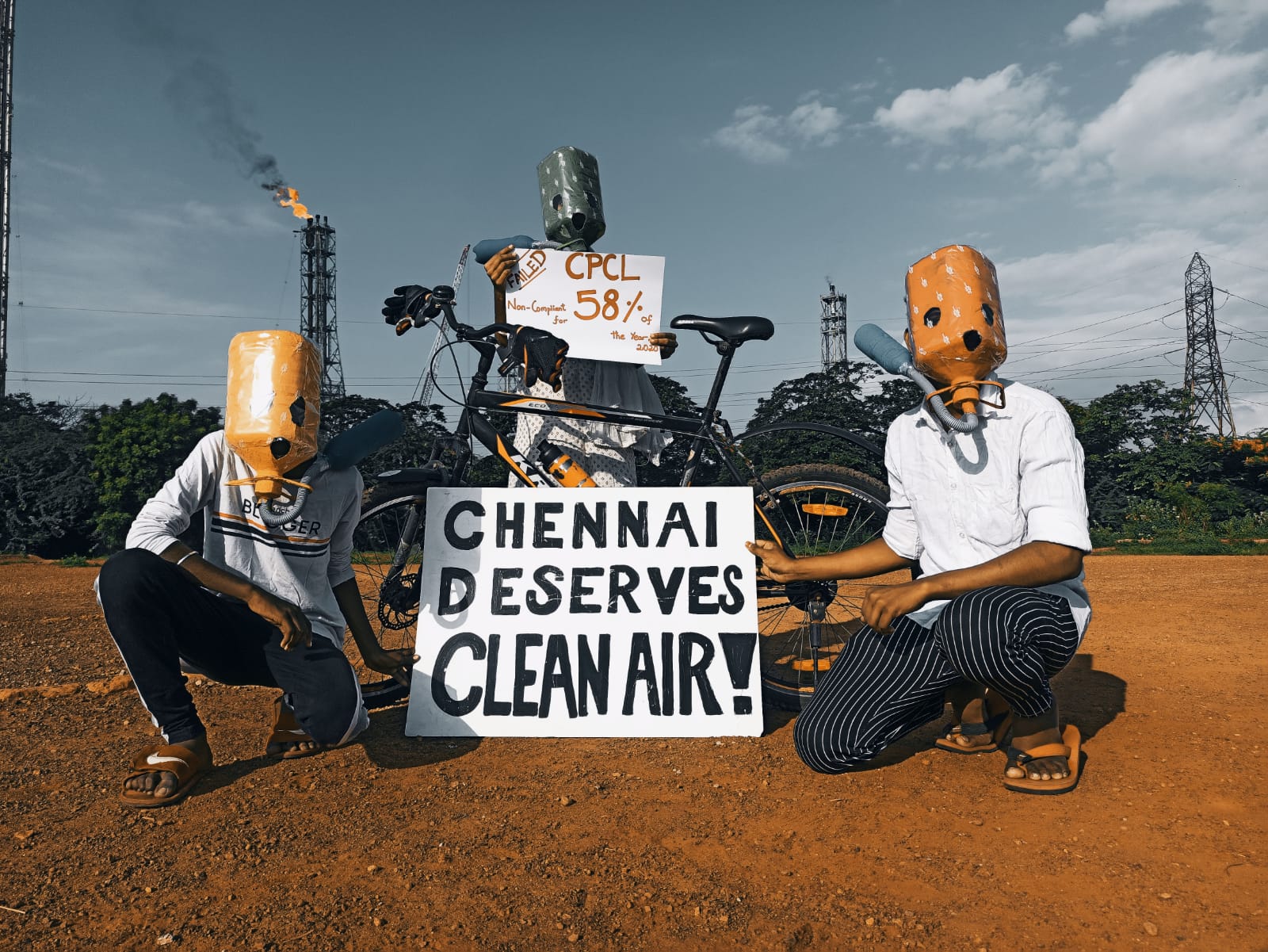The five-member committee submitted its reports on the Manali gas leak to the government on 27 July. The report is yet to be made public.

People residing in Manali and Tiruvottiyur region have complained of an LPG-like smell causing breathlessness and eye irritations. (South First)
The technical committee formed by the Tamil Nadu government to inspect the LPG odour in the Manali and Tiruvottiyur areas of Chennai has said in its report that the Chennai Petroleum Corporation Limited (CPCL) was the original source of the smell.
In the report it submitted to the government on 27 July, the five-member committee recommended a reduction in the use of high-sulphur crude oil in the refinery.
Comprised of scientists and representatives from the Central Pollution Control Board, IIT Madras, and Anna University, the committee inspected CPCL before submitting its report, which is yet to be made public.
A committee member not willing to be named confirmed to South First that the LPG odour, which caused panic among Manali and Tiruvottiyur residents, was due to the use of high-sulphur crude oil by CPCL.
The committee member said that if the sulphur level in crude oil is more than 0.5 percent by weight, the oil is called “sour”.
“The high sulphur components in crude oil would impact the refining process due to erosion problems in pipelines and refining equipment, thus making it harmful to the environment,” he added.
The panel member also said, “In the report, we have suggested reducing the sour-gas feed to sulphur recovery units (SRUs) to prevent the spread of excess gas to the flaring system, which the panel suspects to be the primary source of the odour.”
He added: “Steps to ensure enough incinerators are attached to SRUs to achieve a sulphur recovery efficiency of 98.7 percent as per hydrogen sulphide (H2S) emission standards prescribed for the refinery by the Ministry of Environment as per a notification issued on 18 March, 2008, and to furnish details of sulphur recovery efficiency with supporting documents to the Tamil Nadu Pollution Control Board (TNPCB) daily.”
The residents of Manali and Tiruvottiyur near Chennai have been complaining since last month that they are facing breathing problems and eye irritation since the LPG odour was first detected.
Balaji, 29, an employee of a private firm who resides near the CPCL refinery in Manali, told South First that he felt the pungent smell in the locality but was unsure what it was.
“It smells like LPG, but I don’t know how to explain it. When I discussed it with others, they felt the same way and many complained of eye irritation and breathlessness,” he said.
Environmental activist Nityanand Jayaraman told South First that the odour might be due H2S and mercaptans — organic components made of hydrocarbons and sulphur, which have a bad smell and corrosive properties — present in high concentrations in substandard crude oil.
“Even though mercaptans are common contaminants of fewer hydrocarbon components, both are corrosive to metals, leading to poisoning the catalyst and are offensive in smelling,” Jayaraman said.
“H2S and mercaptans are potent neurotoxins that can damage a child’s brain,” the environmental activist added.
Jayaraman also accused the state government and the TNPCB of being silent on the issue.
“The government’s silence on the issue even after the committee submitted its report speaks volumes. It secretly permits the CPCL to continue the work,” he said.
Environmental activist, health researcher, and Chennai Climate Action Group co-founder Dr Vishvaja Sambath told South First that during her field visit to the spot, residents claimed to be suffering from asthma due to the smell.
“The residents even complained of pain in the lower abdomen since the smell started,” she said.
The zonal medical officer was unavailable for any comments.
The TNPCB on 16 July ruled out the possibility of a gas leak, but confirmed the source of the odour to be CPCL.
It attributed the odour to gases containing sulphur dioxide (SO2) but claimed that the SO2 levels were within permissible limits.
It also reported that the CPCL’s SRUs are unable to deal with the poor quality of the Russian crude that was recently imported.
It said it had recommended the improvement of pollution control protocols to solve the problem.
When contacted, TNPCB members told South First that they had inspected the spots where people complained of breathlessness and eye irritation.
They added that they were waiting for the government to instruct them, after which they would initiate action.
Environment Minister Siva V Meyyanathan, Additional Chief Secretary Supriya Sahu, and the CPCL did not respond to attempts by South First to reach.

May 01, 2024

May 01, 2024

May 01, 2024

May 01, 2024

May 01, 2024

May 01, 2024